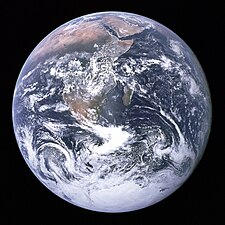Peter Dicken
British geographer
Peter Dicken (born 1938) is an economic geographer who is currently an Emeritus Professor and continuing researcher into global patterns of business and globalisation, at the University of Manchester.

Quotes
editGlobal Shift (2003) (Fourth Edition)
edit- Reality is far more complex and messy than many of the grander themes and explanations would have us believe.
- Chapter 2, A New Geo-Economy, p. 14
- Every production network has spatiality - the particular geographical configuration and extent of its component elements and the links between them.
- Chapter 2, A New Geo-Economy, p. 19
- In fact, technology in, and of, itself does not cause particular kinds of change. It is, essentially, an enabling or facilitating agent. It makes possible new structures, new organizational and geographical arrangements of economic activities, new products and new processes, while not making particular, outcomes inevitable.
- Chapter 4, Technology: The Engine of change, p. 85
- Innovation - the heart of technological change - is fundamentally a learning process.
- Chapter 4, Technology: The Engine of change, p. 115
- (Mercantilism is based upon the idea that a nation's wealth and security depend upon its ability to regulate and control its external trade at the expense of others.)
- Chapter 5, The State, p. 132
- " the internationalization of economic activity and its major vehicle, the TNC, can be regarded simply as being part of the normal expansive process of capitalist development."
- Chapter 7, Transnational Corporations, p. 200
- It serves to remind us that, in trying to explain the globalization of economic activity, we are dealing with the workings of a dynamic capitalist market system, and not just individual agents within it.
- Chapter 7, Transnational Corporations, p. 202
- Significantly, the 14 most transnational firms (in terms of the TNI) originate from small countries (Switzerland, the UK, the Netherlands, Belgium, Canada)
- Chapter 7, Transnational Corporations, p. 221
- Transnational corporate networks, and their resulting spatial patterns, are always in a continuous state of flux. At any one time, some parts may be growing rapidly, others may be stagnating, others may be in steep decline.
- Chapter 8, Transnational Production Networks, p. 250
- More broadly, strategic alliances are more difficult to manage and coordinate than single ventures; the potential for misunderstanding and disagreement, particularly between partners from different cultures, is great. Certainly many such alliances are short lived.
- Chapter 8, Transnational Production Networks, p. 262
- It is indeed paradoxical that an industry which epitomizes all that is new and up-to-date at the same time harbours some of the oldest and least desirable attributes of work in manufacturing industry.
- Chapter 12, The Semiconductor Industry, p. 409
- One of the most striking developments has been the rise, fall and rise again of the semiconductor industry of the United States, which is, once again, the dominant player in the most advanced semiconductor product-markets.
- Chapter 12, The Semiconductor Industry, p. 435
- Without the parallel development of systems of monetary - and credit-based exchange there could have been no development of economies beyond the most primitive organizational forms and the most geographically restricted sales.
- Chapter 13, The Financial Services Industries, p. 437
- In the United Kingdom, for example, the sheer overwhelming dominance of London makes it extremely for provincial cities to develop more than a very restricted financial function. London, in that sense, is akin to the notorious upas tree, a fabulous Javanese tree so poisonous that it destroys all life for many miles around itself.
- Chapter 13, The Financial Services Industries, p. 467
- A striking feature of financial service activities during the past few decades is that the financial transactions essential to the operation of the 'real' economy has become increasingly dwarfed by speculative activity.
- Chapter 13, The Financial Services Industries, p. 469
- The primary driver of final consumer demand is, of course, the level of disposable income.
- Chapter 14, The Distribution Industries, p. 475
- Geographically, the global economy is now multi-polar, as new centres of production have emerged in parts of what had been, historically, the periphery of the world economy. The world is now more accurately described as a 'mosaic of unevenness in a continual state of flux'.
- Chapter 15, Winners and Losers, p. 509
- One of the most striking trends, since at least the 1960's, has been for employment in services to grow far more rapidly than employment in manufacturing. It is this trend that has led to the view that developed economies have become de-industrialized and that they are now effectively service economies.
- Chapter 16, Making a Living in Developed Countries, p. 525
- It remains to be seen, for example whether China can continue to develop as a market economy while still retaining an authoritarian communist political system.
- Chapter 17, Making a Living in Developing Countries, p. 569
- This is not an argument for levelling down but for raising up. The means for doing this are there. What matters is the will to do it. We all have a responsibility to ensure that the contours of the global economic map in the 21st century are not as steep and uneven as those of the 20th century.
- Chapter 18, Making the World a Better Place, p. 600